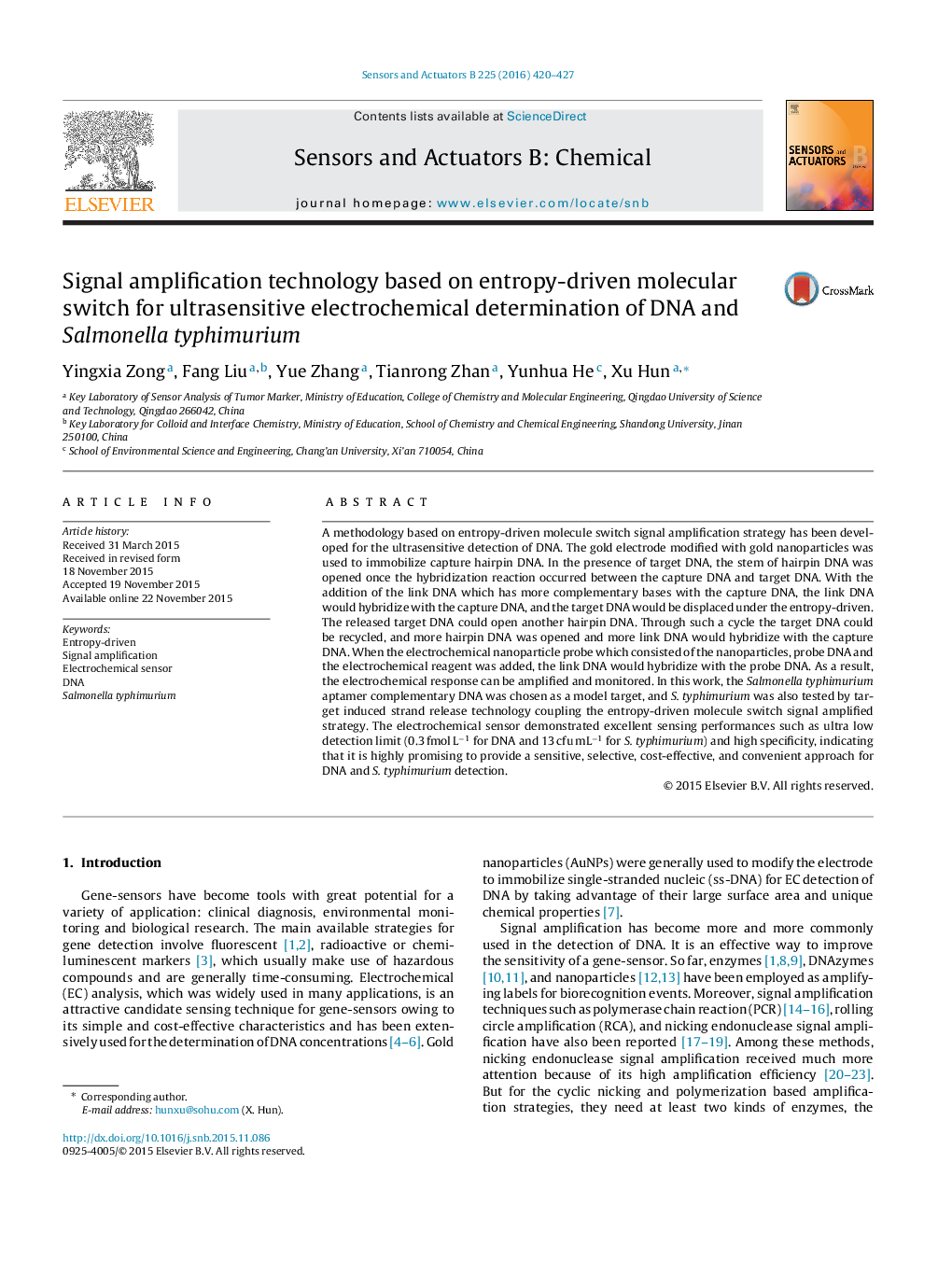| Article ID | Journal | Published Year | Pages | File Type |
|---|---|---|---|---|
| 744220 | Sensors and Actuators B: Chemical | 2016 | 8 Pages |
A methodology based on entropy-driven molecule switch signal amplification strategy has been developed for the ultrasensitive detection of DNA. The gold electrode modified with gold nanoparticles was used to immobilize capture hairpin DNA. In the presence of target DNA, the stem of hairpin DNA was opened once the hybridization reaction occurred between the capture DNA and target DNA. With the addition of the link DNA which has more complementary bases with the capture DNA, the link DNA would hybridize with the capture DNA, and the target DNA would be displaced under the entropy-driven. The released target DNA could open another hairpin DNA. Through such a cycle the target DNA could be recycled, and more hairpin DNA was opened and more link DNA would hybridize with the capture DNA. When the electrochemical nanoparticle probe which consisted of the nanoparticles, probe DNA and the electrochemical reagent was added, the link DNA would hybridize with the probe DNA. As a result, the electrochemical response can be amplified and monitored. In this work, the Salmonella typhimurium aptamer complementary DNA was chosen as a model target, and S. typhimurium was also tested by target induced strand release technology coupling the entropy-driven molecule switch signal amplified strategy. The electrochemical sensor demonstrated excellent sensing performances such as ultra low detection limit (0.3 fmol L−1 for DNA and 13 cfu mL−1 for S. typhimurium) and high specificity, indicating that it is highly promising to provide a sensitive, selective, cost-effective, and convenient approach for DNA and S. typhimurium detection.
Graphical abstractA new methodology based on entropy-driven molecule switch signal amplification strategy has been developed for the ultrasensitive detection of DNA and Salmonella typhimurium.Figure optionsDownload full-size imageDownload as PowerPoint slide
